Prompt actions by rescuers in Myanmar save lives, minimize further health and safety risks
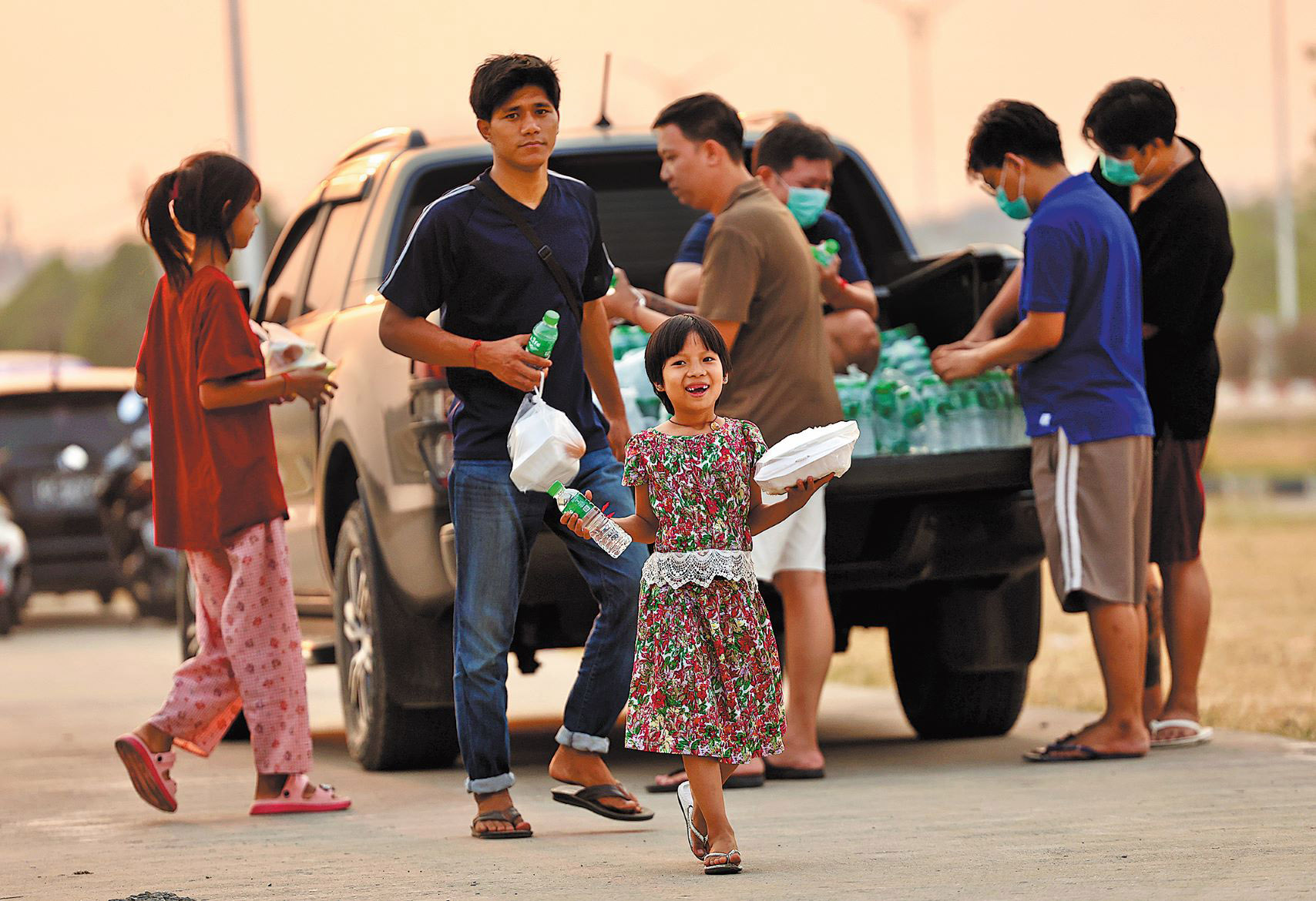
An elderly woman was successfully rescued by a Chinese rescue team from under hospital rubble in Myanmar's capital, Nay Pyi Daw, on Sunday morning, nearly 40 hours after the magnitude 7.9 earthquake struck on Friday.
"When she was carried onto a stretcher by rescuers, everyone on the scene was excited," said Mu Shuyuan, from China's Yunnan province rescue and medical team.
The 37-member team was the first international one to arrive at the earthquake-stricken area. Eighteen of the team members are from China Railway No 2 Engineering Group's National Tunnel Emergency Rescue Team based in Kunming, the capital of Yunnan. They are responsible for rescue efforts, while the others take care of medical needs and help with disease prevention.
READ MORE: Chinese teams rescue six in quake-hit Myanmar
Carrying emergency rescue supplies, including life detection equipment, an earthquake early-warning system and portable satellite equipment, the team arrived at Yangon International Airport on Saturday morning.
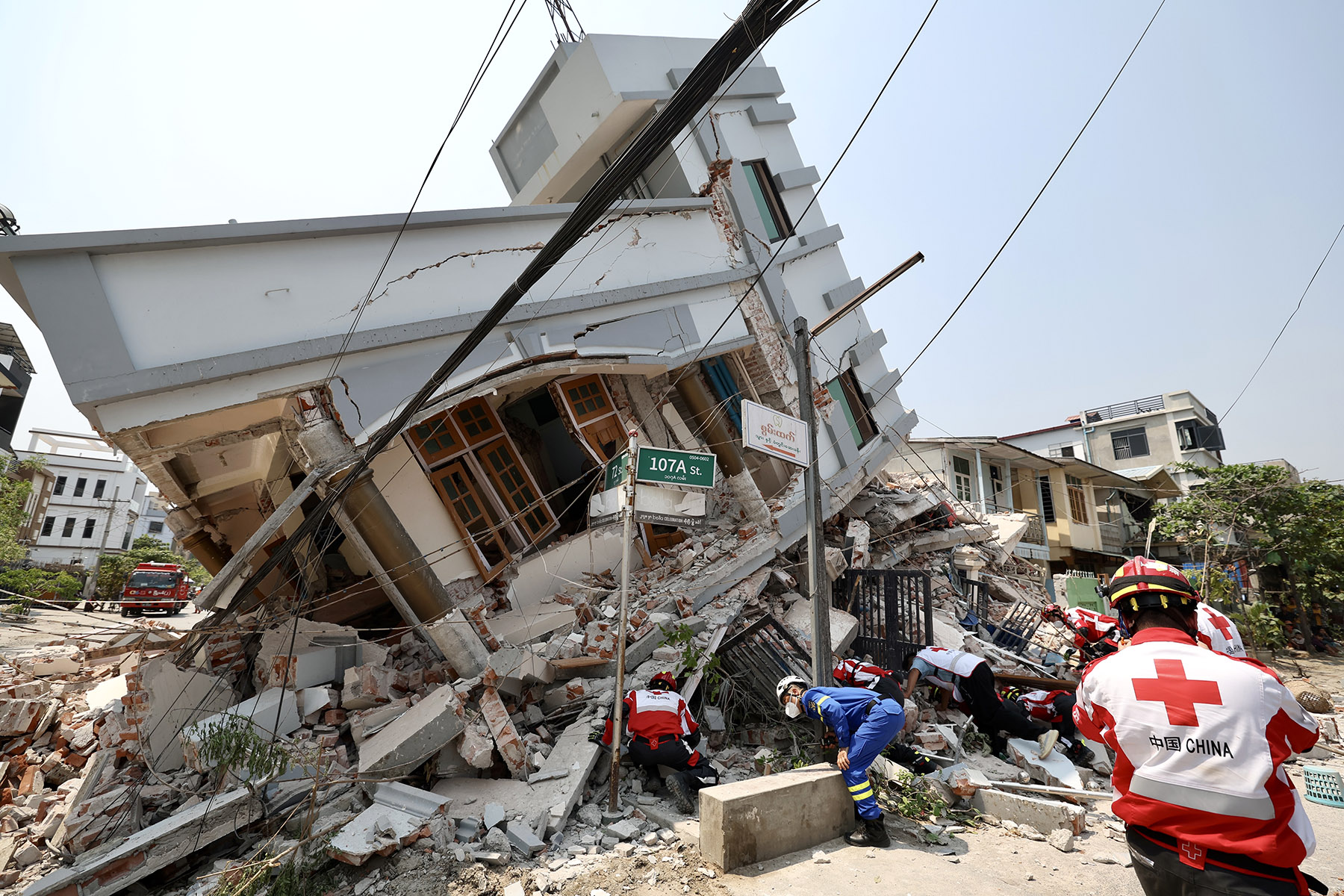
Upon landing, they immediately joined forces with the Myanmar fire and rescue department, and after traveling for more than nine hours reached severely affected areas in Nay Pyi Daw.
"Without taking a break, we brought demolition tools and communication equipment to the designated location, and quickly engaged in rescue work," said Mu, leader of the rescue squad.
At Ottara Thiri Private Hospital, a three-story building was severely damaged, with the ground floor completely collapsed.
Using a sign of life detector, Mu's squad located a survivor trapped under the collapsed floor.
His deputy Xiao Min crawled in front of a crevice in the rubble, shone a flashlight in the space and called out loudly in Mandarin with a Guizhou accent, "Don't be afraid. We are here to rescue you!"
Realizing there was a language barrier, Xiao immediately called for a translator. The translator was able to communicate the message, and a hoarse response was heard emanating from deep within the debris.
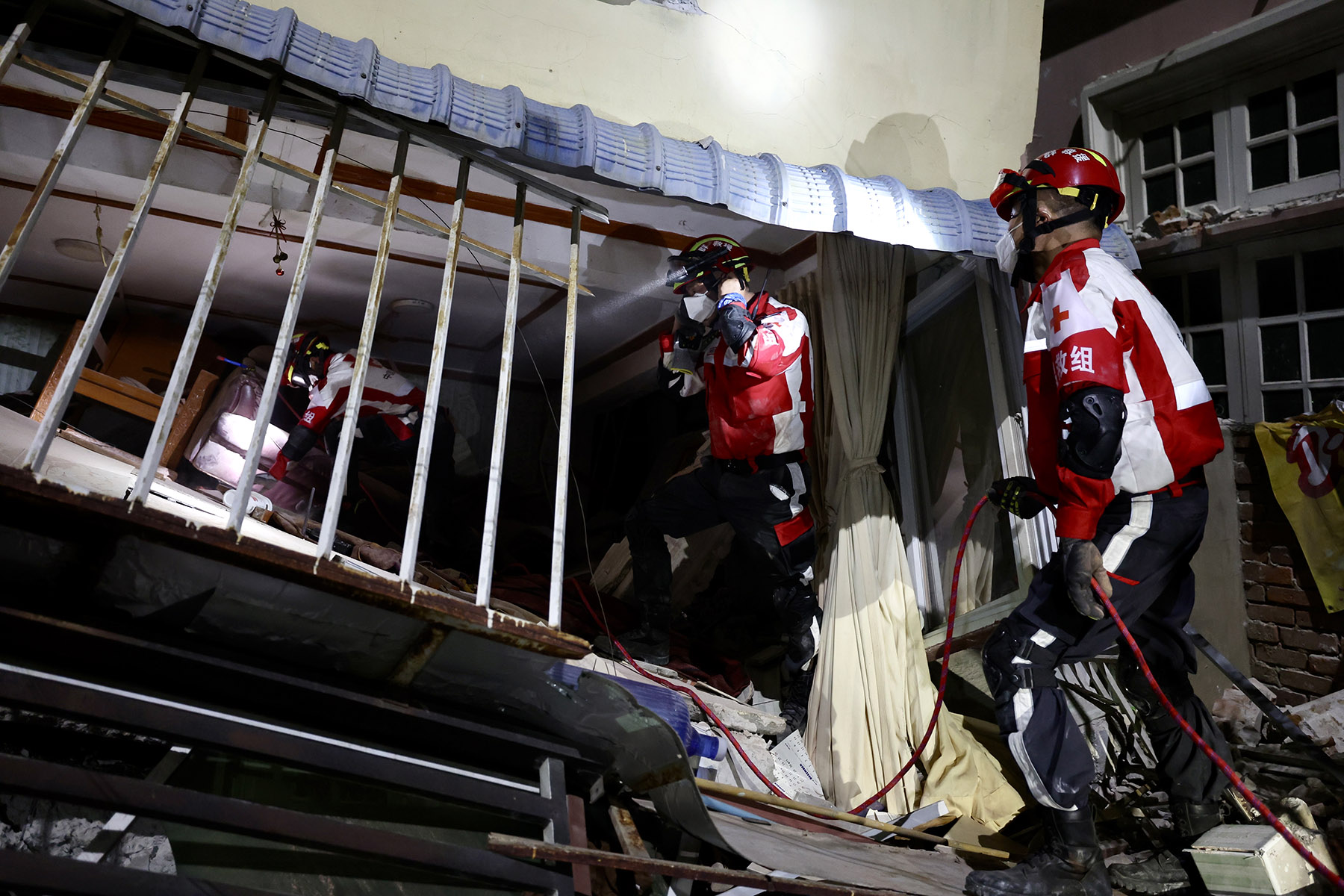
A 73-year-old woman, who had previously undergone brain surgery and returned to the hospital for a checkup, was trapped in a narrow space between the second and first floors, alongside bodies of the deceased.
Due to the complex environment, they devised a rescue plan along with local emergency workers.
"During the rescue process, we not only had to consider that drilling vibrations might cause concrete blocks to fall, causing secondary harm to the trapped individuals, but we also had to be vigilant about aftershocks and the risk of collapse," Xiao said.
After drilling two access holes, one running horizontally and the other vertically, they still could not reach the woman. They then drilled a third hole, which enabled them to remove the bodies of two deceased people on top of the woman.
At 4:56 am on Sunday, after being trapped for nearly 40 hours, she was successfully rescued.
"Make sure to lift steadily and slowly," Xiao repeatedly instructed those carrying the stretcher. When she was safely placed in an ambulance, he let out a sigh of relief.
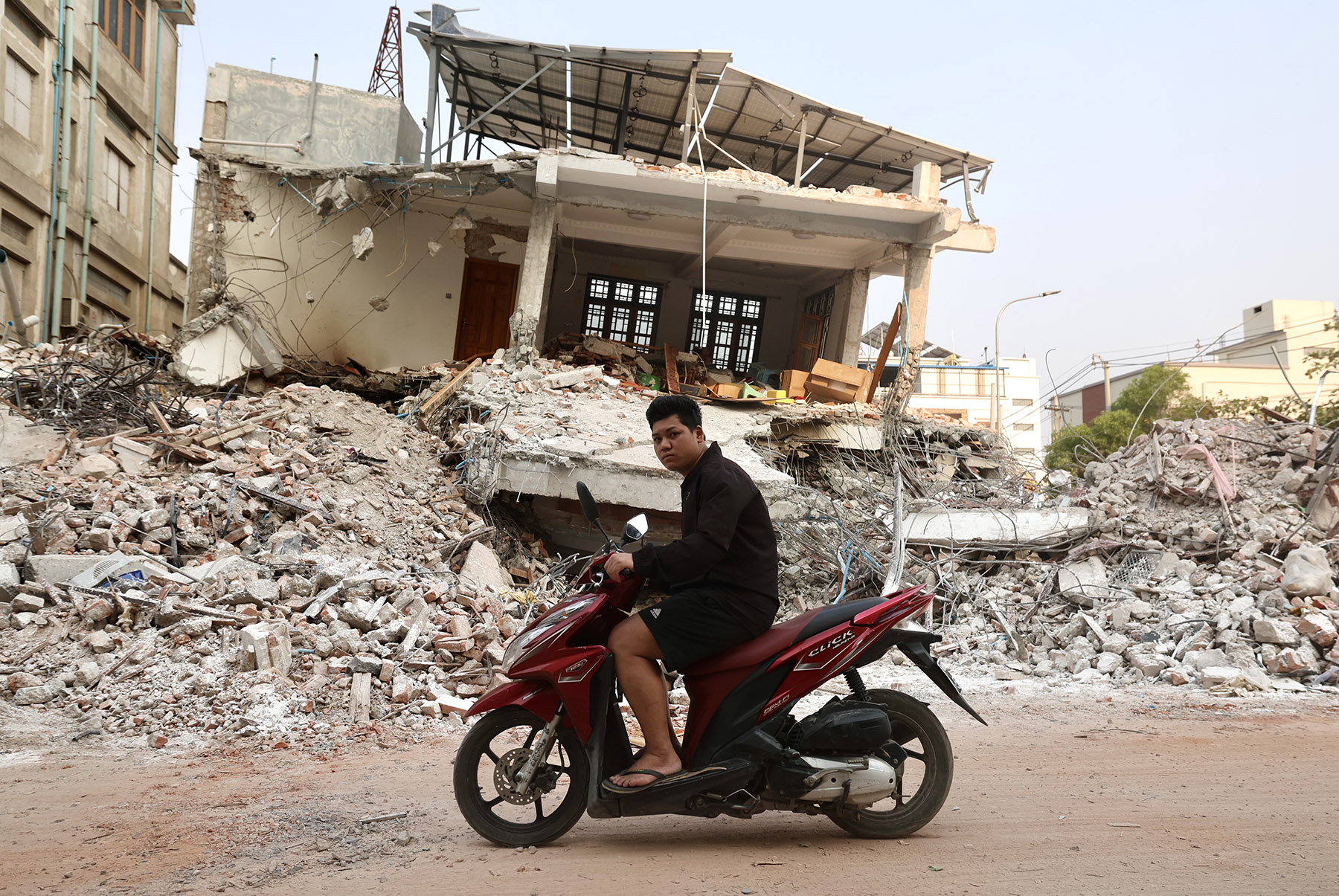
Heartfelt gratitude
After saving the woman, Mu led the squad to the main building of the hospital, where a trembling elderly man grabbed his wrist and spoke in a croaky voice to him.
Translators and local firefighters informed Mu that the man was a relative of a victim whose body had been retrieved from the debris.
Despite the outcome not being as desired, he expressed deep gratitude for the hard work of the rescue team.
"Although we couldn't understand each other's languages, his emotions and sincerity deeply touched us," Mu said.
On Sunday morning, Myanmar's leader Min Aung Hlaing visited the hospital and expressed heartfelt gratitude to the entire Yunnan rescue and medical team for their prompt arrival in Myanmar for rescue operations.
Medical team member He Jibo communicated and coordinated with accompanying Myanmar health officials. He said that they were very concerned about the occurrence and spread of infectious diseases due to poor hygiene.
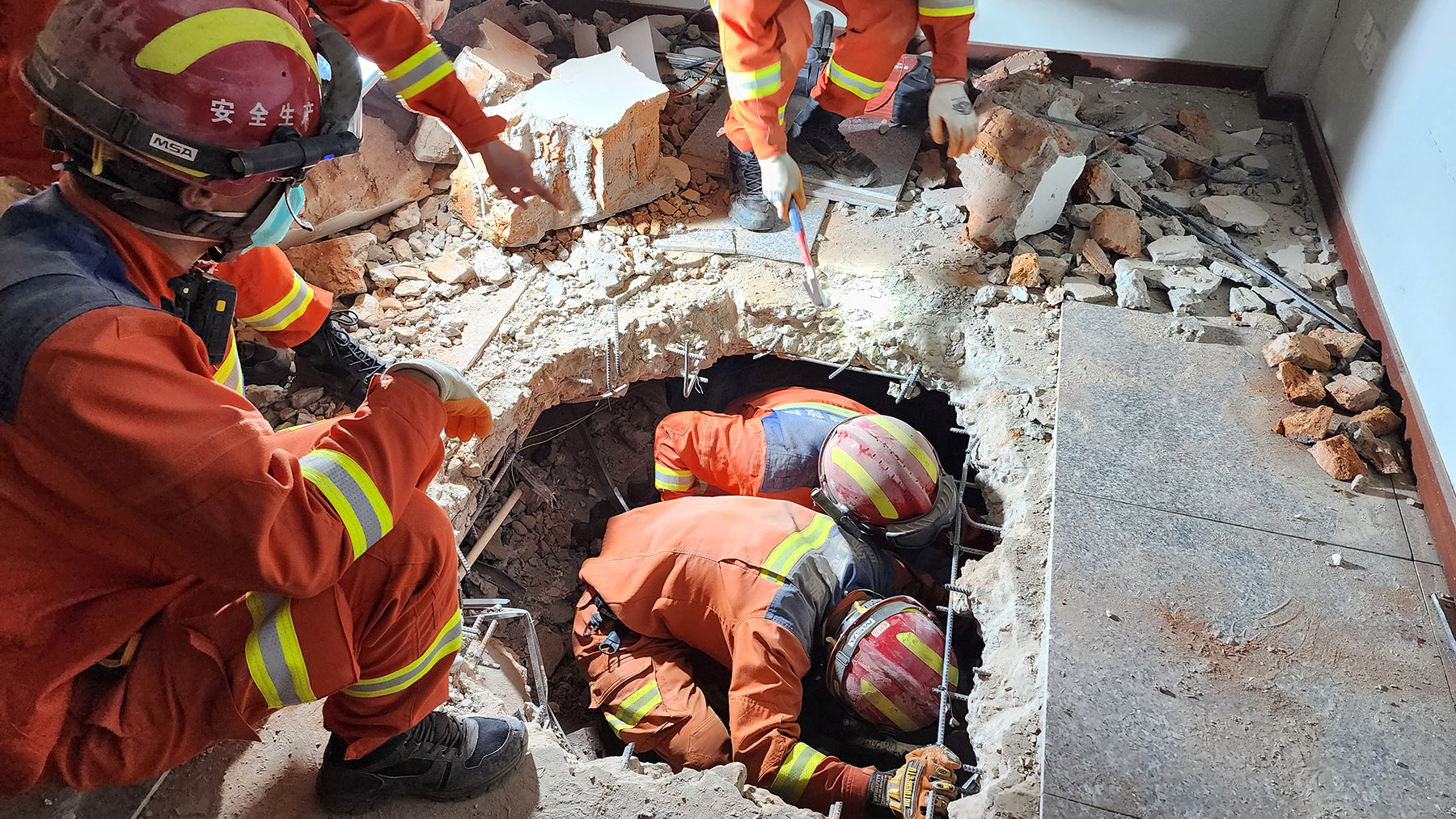
The Chinese team will work with Myanmar's health department and disease control center to further clarify post-disaster health and epidemic prevention needs, He said.
"The rescue operation in the quake-hit area faces various difficulties. Myanmar, both officially and privately, is deeply moved by China's immediate mobilization for disaster relief," said Chin Myint, managing director of Yangon-based Myanmar Weimin Energy Technology Co.
"As far as I know, the number of Chinese rescuers who arrived in Mandalay has exceeded 300," he said on Monday.
Chin said he was on a business trip to Mandalay on Friday when he felt the strong earthquake while checking into his hotel.
He said he immediately went to the hardest-hit area of the city to assist front-line rescue workers and also participated in fundraising for the victims and survivors. "We need to do our best. The buildings have collapsed, but we cannot let hope collapse as well," he said.

Responsible neighbor
The Yunnan rescue and medical team was joined in Myanmar by a Hong Kong search and rescue team, the China Search and Rescue Team, the China International Search and Rescue Team, as well as various civilian rescue forces from different parts of the mainland.
The Chinese Red Cross International Emergency Response Team traveled to Mandalay, where its 15 team members were involved in search and rescue efforts, care and transfer of survivors, medical assistance, and provided psychological counseling.
On Sunday, while preparing for departure at Kunming airport, they encountered a middle-aged Myanmar overseas Chinese named Sein Yee, who cried with excitement upon seeing the team.
Sein had planned to fly back to Mandalay from Mangshi of Dehong Dai and Jingpo autonomous prefecture, Yunnan, on Friday. Due to the earthquake, the flight was canceled so she transferred to Kunming.
"On one hand, I was moved because we were in distress, and China promptly came to our rescue," she said. "On the other hand, seeing the disaster scenes sent by friends after the earthquake made me very sad."
"My heart has been aching, hoping more people are rescued as soon as possible," she said.
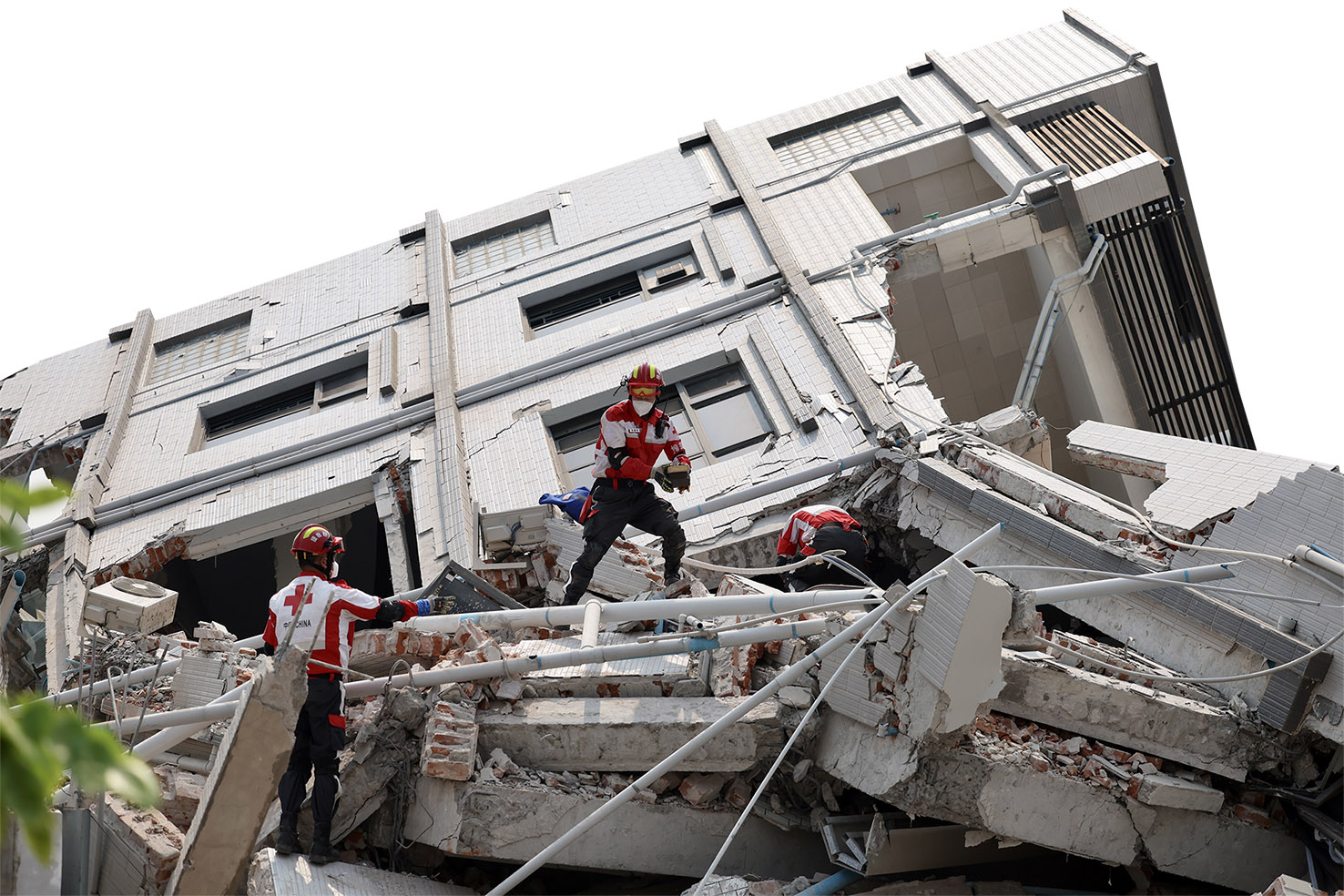
Ma Yong, a researcher at the Yunnan Academy of Social Sciences, said that China and Myanmar form a community with a shared future. The two countries share "weal and woe", bound by a profound pauk-phaw ("fraternal" in the Myanmar language) friendship between their peoples.
"True solidarity shines brightest in times of adversity," Ma said. "Upon learning of the devastating earthquake in Myanmar, the Chinese government immediately extended assistance, with Chinese rescue teams being the first to arrive on the scene.
"They swiftly engaged in relief operations and announced humanitarian aid. The rapid and efficient involvement of Chinese rescue forces has helped people in Myanmar fight the disaster. This has further strengthened the 'heart-to-heart connectivity' between the peoples of China and Myanmar."
ALSO READ: More Chinese rescue volunteers rush to Myanmar in quake response
Ran Aobo, a researcher at Tsinghua University's Institute for Urban Governance and Sustainable Development, said China, as a responsible big country, had sent emergency response teams multiple times to other countries for disaster relief work.
China is a participant in Integrated Research on Disaster Risk, an international scientific program co-sponsored by the International Science Council and the United Nations Office for Disaster Risk Reduction, he added.
"China has a strong capability and willingness to enhance international cooperation in disaster relief," he said, adding that the country leverages its expertise in technical training and data sharing.
As Myanmar is an important neighbor, China's actions are also proof of the two countries' long-lasting friendship, he added.
Chen Meiling contributed to this story.
Contact the writers at weixiaohao@chinadaily.com.cn


